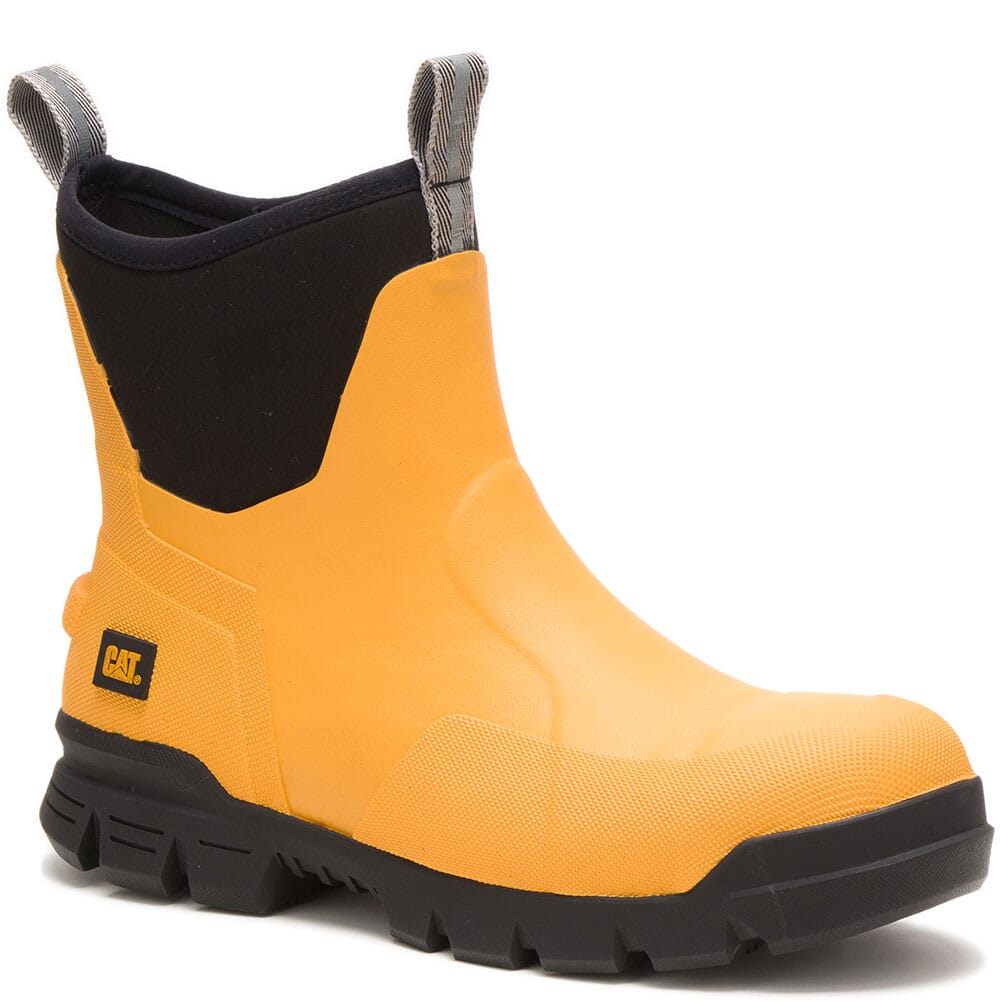What Makes EH Rated Boots So Special?
When it comes to understanding what is EH rated boots, it’s essential to recognize the significance of electrical hazard protection in various industries. EH rated boots are designed to prevent electrical shocks in the workplace, making them a crucial component of personal protective equipment (PPE). The term EH stands for Electrical Hazard, and it refers to a specific type of footwear that meets the safety standards set by organizations such as the American Society for Testing and Materials (ASTM) and the International Safety Equipment Association (ISEA). In industries where workers are exposed to electrical currents, such as construction, manufacturing, and electrical work, EH rated boots are a must-have to ensure worker safety. In fact, the Occupational Safety and Health Administration (OSHA) mandates the use of EH rated boots in certain occupations to prevent electrical hazards. By wearing EH rated boots, workers can have peace of mind knowing they are protected from electrical shocks, allowing them to focus on their tasks with confidence.
How to Choose the Right EH Rated Boots for Your Needs
When it comes to selecting the perfect EH rated boots, there are several factors to consider. Job requirements, personal comfort, and budget are all crucial elements to think about when making a purchase. For instance, if you work in a hazardous environment with electrical currents, you’ll want to prioritize boots with superior insulation and waterproofing. On the other hand, if you’re looking for a more comfortable option, you may want to opt for boots with cushioning and breathable materials. Popular brands like Timberland, Dr. Martens, and Thorogood offer a range of EH rated boots that cater to different needs and preferences. It’s essential to research and compare different models to find the one that best suits your requirements. Additionally, consider factors such as durability, slip-resistance, and certification to ensure you’re getting a high-quality pair of EH rated boots. By taking the time to choose the right EH rated boots, you can rest assured that you’re protected from electrical hazards and able to perform your job with confidence.
The Science Behind EH Rated Boots: Understanding the Technology
EH rated boots are designed to prevent electrical shocks in the workplace, and their technology is rooted in the use of specialized materials and testing processes. The primary material used in EH rated boots is rubber, which is a natural insulator that prevents the flow of electricity. The rubber used in EH rated boots is typically thicker and more durable than that found in non-EH rated boots, providing an additional layer of protection against electrical hazards. In addition to rubber, EH rated boots may also feature other insulating materials, such as polyvinyl chloride (PVC) or ethylene-vinyl acetate (EVA). These materials work together to prevent electrical currents from flowing through the boot and into the wearer’s body.
The testing process for EH rated boots is rigorous and involves subjecting the boots to a series of electrical tests. These tests are designed to simulate real-world electrical hazards, such as stepping on a live wire or coming into contact with an electrical current. The boots are tested to ensure that they can withstand a certain level of electrical voltage without allowing the current to flow through to the wearer’s body. Boots that meet the necessary standards are certified as EH rated, providing assurance that they can protect workers from electrical hazards.
Certification is a critical component of EH rated boots, as it ensures that the boots meet the necessary safety standards. In the United States, EH rated boots are certified by organizations such as the American Society for Testing and Materials (ASTM) and the International Safety Equipment Association (ISEA). These organizations have established strict guidelines for EH rated boots, including requirements for materials, testing, and performance. By choosing EH rated boots that are certified by a reputable organization, workers can have confidence that their boots will provide the necessary protection against electrical hazards.
Industries That Require EH Rated Boots: A Closer Look
Certain industries pose a higher risk of electrical hazards, making EH rated boots a mandatory requirement for workers. Construction, manufacturing, and electrical work are just a few examples of industries where EH rated boots are essential. In these fields, workers are often exposed to live wires, electrical currents, and other hazardous conditions that can lead to serious injury or even death.
In the construction industry, for instance, workers may be required to work on scaffolding or ladders, increasing their risk of electrical shock. Similarly, in manufacturing, workers may be exposed to electrical equipment and machinery that can malfunction and cause electrical hazards. Electrical workers, such as linemen and electricians, are also at high risk of electrical shock due to their proximity to live wires and electrical currents.
The risks associated with electrical hazards in these industries are very real. According to the Occupational Safety and Health Administration (OSHA), electrical hazards are a leading cause of workplace injuries and fatalities. In fact, electrical shock is responsible for hundreds of deaths and thousands of injuries each year in the United States alone. By wearing EH rated boots, workers can significantly reduce their risk of electrical shock and ensure a safer working environment.
In addition to these industries, EH rated boots are also required in other fields, such as oil and gas, mining, and telecommunications. Any industry where workers are exposed to electrical hazards should prioritize the use of EH rated boots to ensure worker safety and prevent electrical accidents.
EH Rated Boots vs. Non-EH Rated Boots: What’s the Difference?
When it comes to footwear, EH rated boots and non-EH rated boots are two distinct categories that cater to different needs and purposes. Understanding the differences between these two types of boots is crucial for workers who require electrical hazard protection in their daily jobs.
EH rated boots are specifically designed to provide protection against electrical hazards, making them a must-have for workers in industries such as construction, manufacturing, and electrical work. These boots are engineered with specialized materials and technology that prevent electrical currents from flowing through the boot and into the wearer’s body. EH rated boots are certified to meet rigorous safety standards, ensuring that they can withstand electrical shocks and protect the wearer from harm.
On the other hand, non-EH rated boots do not provide the same level of electrical hazard protection. While they may be suitable for everyday wear or casual activities, they are not designed to protect against electrical shocks and should not be worn in environments where electrical hazards are present. Non-EH rated boots may be more affordable and stylish, but they compromise on safety, making them a risky choice for workers who require electrical hazard protection.
The benefits of EH rated boots far outweigh those of non-EH rated boots. EH rated boots provide peace of mind and protection against electrical hazards, allowing workers to focus on their jobs without worrying about their safety. In contrast, non-EH rated boots may be cheaper, but they can put workers at risk of electrical shock, which can have devastating consequences. By prioritizing safety and investing in EH rated boots, workers can ensure a safer working environment and reduce the risk of electrical accidents.
In conclusion, EH rated boots and non-EH rated boots are designed for different purposes and cater to different needs. While non-EH rated boots may be suitable for casual wear, EH rated boots are a must-have for workers who require electrical hazard protection. By understanding the differences between these two types of boots, workers can make informed decisions about their footwear and prioritize their safety in the workplace.
Top Features to Look for in EH Rated Boots
When selecting the perfect EH rated boots, it’s essential to consider the key features that ensure both safety and comfort. By understanding what to look for, workers can make informed decisions about their footwear and prioritize their safety in the workplace.
One of the most critical features to look for in EH rated boots is insulation. EH rated boots are designed to prevent electrical shocks, and insulation plays a vital role in this process. Look for boots with high-quality insulation that can withstand electrical currents and prevent them from flowing through the boot.
Waterproofing is another essential feature to consider. EH rated boots are often used in wet or humid environments, and waterproofing ensures that the boots remain dry and functional. This feature is particularly important in industries such as construction or manufacturing, where workers may be exposed to water or moisture.
Slip-resistance is also a critical feature to look for in EH rated boots. Slippery surfaces can be hazardous, and EH rated boots with slip-resistant soles can help prevent accidents. This feature is particularly important in industries such as electrical work, where workers may be required to climb ladders or work on slippery surfaces.
In addition to these features, workers should also consider the comfort and fit of their EH rated boots. A comfortable and secure fit is essential for preventing blisters and discomfort, which can distract workers from their tasks and compromise their safety.
To ensure a comfortable and secure fit, workers should consider the following tips:
- Try on several sizes and styles to find the best fit.
- Wear the same type of socks or clothing that will be worn on the job.
- Walk around the store to ensure the boots are comfortable and don’t cause blisters.
By considering these key features and tips, workers can find the perfect EH rated boots for their needs and prioritize their safety in the workplace.
EH Rated Boots: Debunking Common Myths and Misconceptions
Despite their importance in ensuring worker safety, EH rated boots are often misunderstood. Many workers believe that EH rated boots are bulky, uncomfortable, and lacking in style. However, these misconceptions couldn’t be further from the truth.
One common myth about EH rated boots is that they are bulky and heavy. While it’s true that EH rated boots may be slightly heavier than non-EH rated boots, this is due to the additional materials and technology used to provide electrical hazard protection. Modern EH rated boots are designed to be lightweight and comfortable, making them suitable for a wide range of industries and applications.
Another myth is that EH rated boots are lacking in style. This couldn’t be further from the truth. Many popular brands, such as Timberland and Dr. Martens, offer EH rated boots that are both stylish and functional. EH rated boots come in a wide range of styles, from rugged work boots to sleek and stylish dress boots.
Some workers may also believe that EH rated boots are unnecessary for their job. However, electrical hazards can be present in a wide range of industries, from construction to manufacturing to electrical work. EH rated boots provide an essential layer of protection against electrical shocks, making them a must-have for many workers.
In reality, EH rated boots offer a range of benefits, including electrical hazard protection, comfort, and style. By investing in a pair of EH rated boots, workers can ensure their safety and peace of mind, while also enjoying the comfort and style they need to perform their jobs effectively.
So, what is EH rated boots? EH rated boots are a type of footwear that provides electrical hazard protection, making them an essential tool for workers in a wide range of industries. By understanding the benefits and features of EH rated boots, workers can make informed decisions about their footwear and prioritize their safety in the workplace.
Conclusion: Why EH Rated Boots Are a Must-Have for Many Workers
In conclusion, EH rated boots are a crucial component of worker safety in various industries. By providing electrical hazard protection, EH rated boots help prevent electrical shocks and ensure worker safety. With their importance in industries such as construction, manufacturing, and electrical work, EH rated boots are a must-have for many workers.
When selecting EH rated boots, workers should consider factors such as job requirements, personal comfort, and budget. By choosing the right EH rated boots, workers can ensure their safety and peace of mind, while also enjoying the comfort and style they need to perform their jobs effectively.
EH rated boots are not just a necessary tool for worker safety; they are also a valuable investment for employers. By providing EH rated boots to their employees, employers can reduce the risk of electrical hazards and ensure a safe working environment. This, in turn, can lead to increased productivity, reduced downtime, and lower workers’ compensation claims.
So, what is EH rated boots? EH rated boots are a type of footwear that provides electrical hazard protection, making them an essential tool for workers in a wide range of industries. By understanding the benefits and features of EH rated boots, workers and employers can make informed decisions about their footwear and prioritize worker safety.
In the end, EH rated boots are a small price to pay for the safety and well-being of workers. By investing in a pair of EH rated boots, workers can ensure their protection and peace of mind, while also enjoying the comfort and style they need to perform their jobs effectively.







